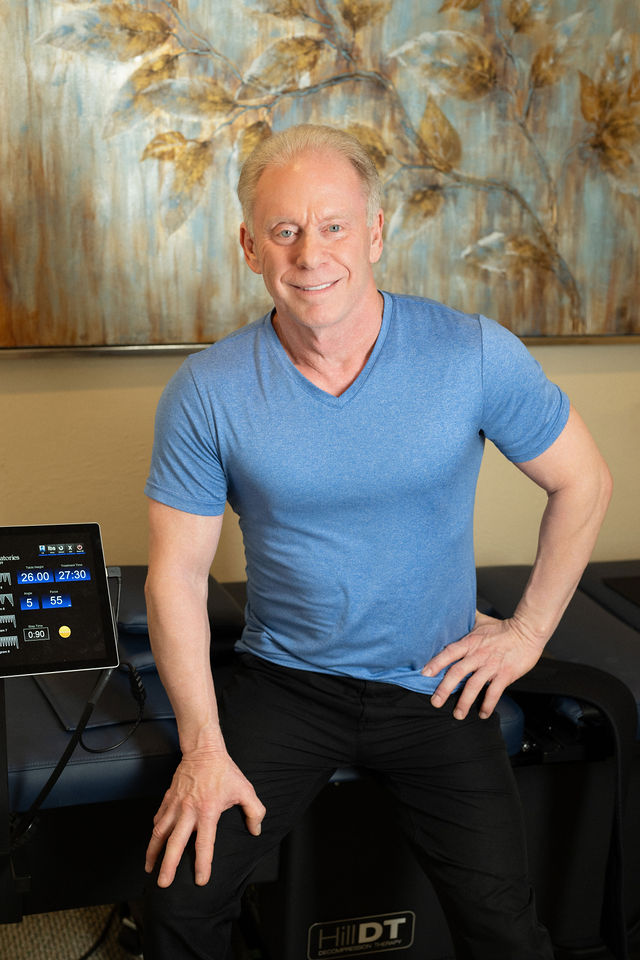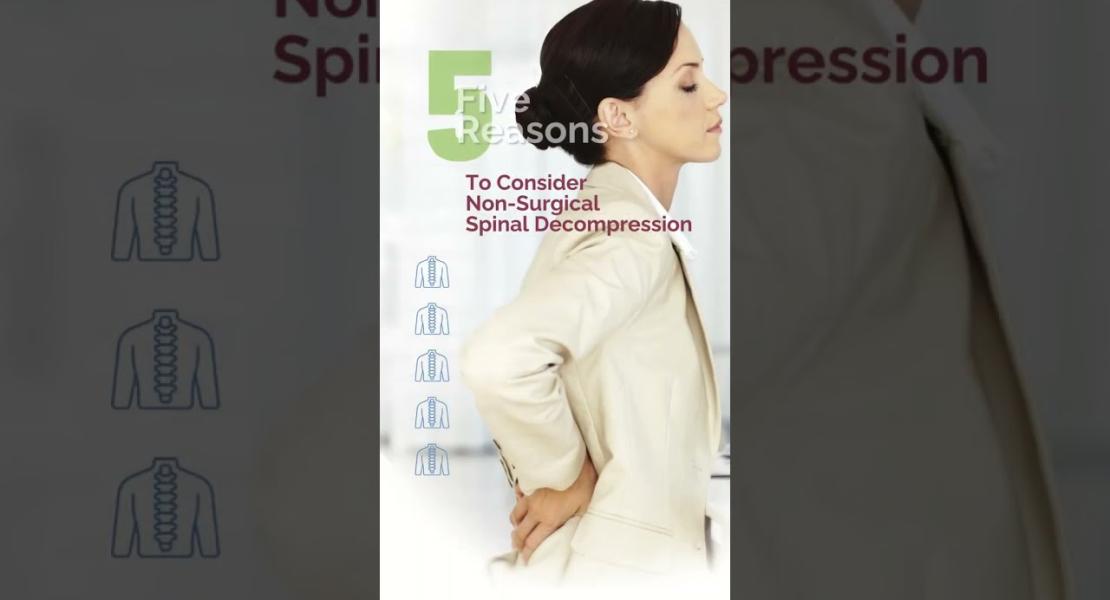Decompression therapy is an alternative to surgery that works by gently lengthening and releasing the spine, creating negative pressures within the spinal discs. This reversal of pressure creates a vacuum within the disc space and helps to pull the bulging disc material back into place, taking the pressure off pinched nerves and surrounding soft tissue. Nutrients, oxygen, and fluids are also pulled back into the disc. This process is accomplished while you are comfortably resting on your back. Advanced software monitors your body’s response to care to allow for decompression at a rate just right for you.

Non-Surgical Spinal Decompression is a non-invasive treatment for patients who suffer from neck and back problems. Our state-of -the-art equipment, The HillDT table, is a comprehensive program and has sensors that continually monitor the patient. The actuator system ensures a smooth, comfortable experience. The vacuum effect the occurs during decompression draws the herniated disc material back into the disc, over time, rehydrating the disc and allowing nutrients and oxygen-rich blood to aid in the healing process.
Five Reasons to Consider Non-Surgical Spinal Decompression
- Bulging or Herniated Discs
- Degenerative Disc Disease
- Facet Syndrome
- Failed Back Surgery
- Ongoing lower back or neck pain that has not responded to treatment
Dr Shaffer will provide a complimentary consultation and review of records to potential candidates. The components of the program include thorough evaluation and pre-treatment therapy as indicated as well as nutritional recommendations focused on restoration of the disc and decreasing inflammation.
The specific decompression protocol will be unique to the patient’s condition to create a phasic physiological change.
Exercises, bracing, and additional neuromuscular and core strengthening rehabilitation will be prescribed to assist the healing and repair.
Diagnosis for potential candidates include
- Disc bulge/herniation
- Degenerative Disc Disease
- Degenerative Joint Disease
- Facet Arthropathy
- Radiculopathy/Radiculitis
- Sciatica
- Post discectomy syndrome
- Opioid addiction due to pain management
- Idiopathic neck or back pain
The HillDT Difference
The HillDT spinal decompression table employs sophisticated load sensor technology which constantly measures and monitors the treatment force and patient-resistance of every treatment. At a rate of over 10,000 pulses per millimeter, the table senses the patient’s approaching threshold and reduces the pull, allowing the table to provide low-force, smooth decompression. The HillDT table's technology means dramatically better outcomes because the patient experiences far less muscle-guarding. Hill Decompression Patient Brochure


